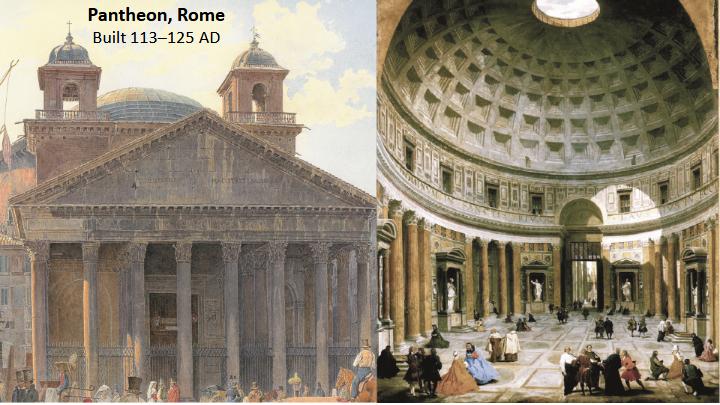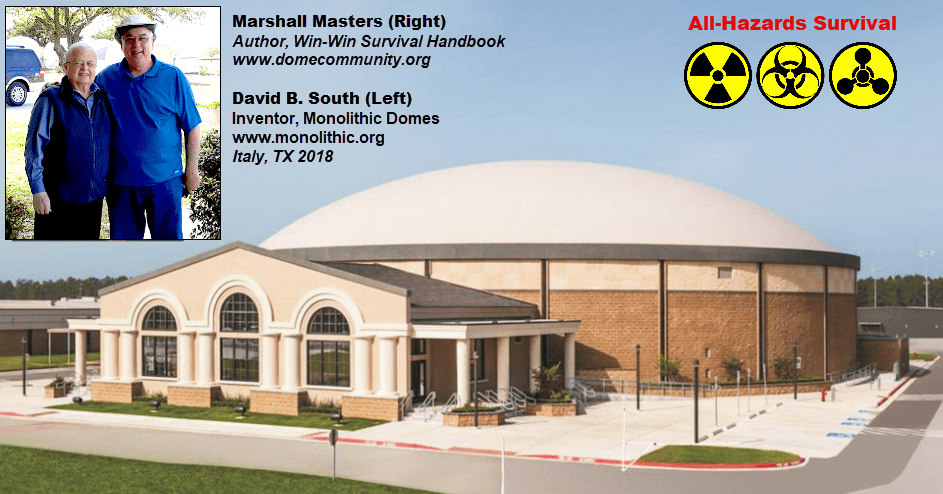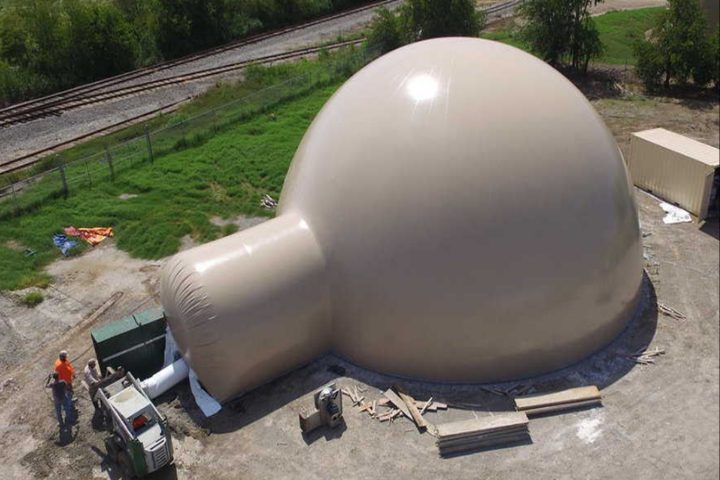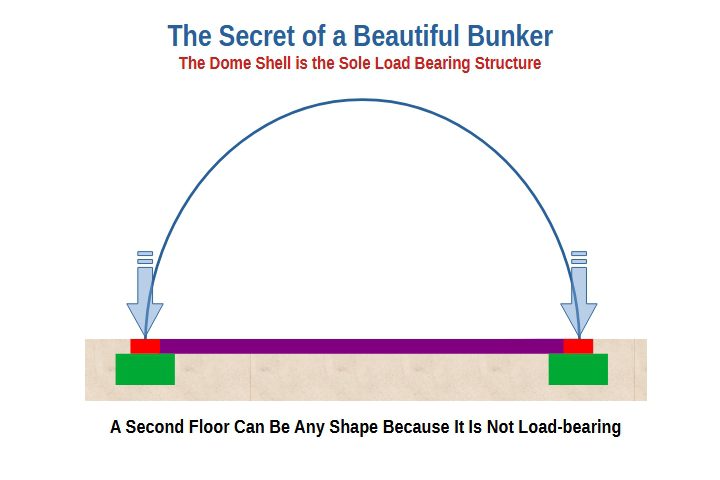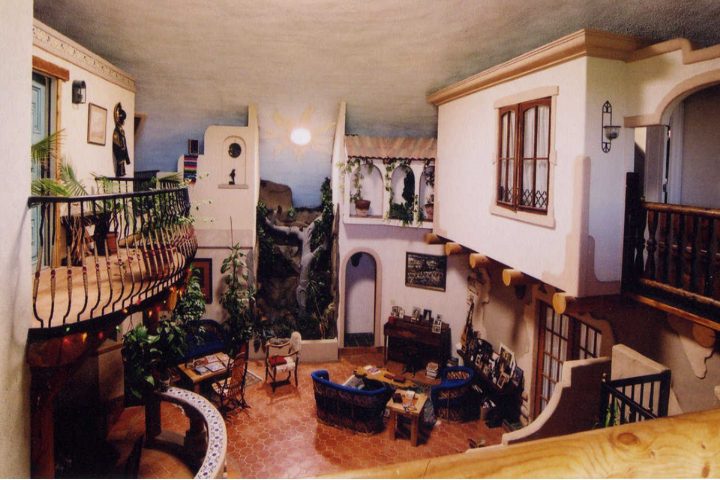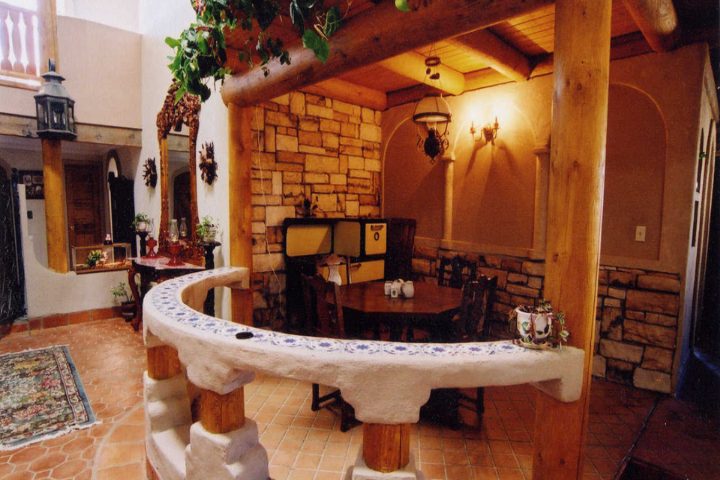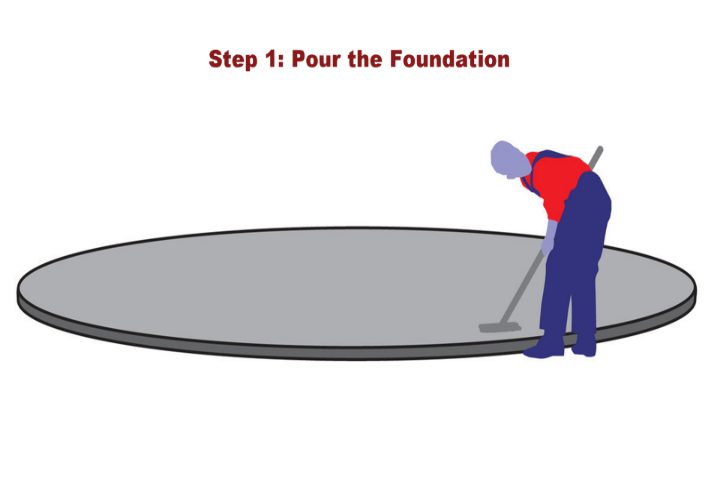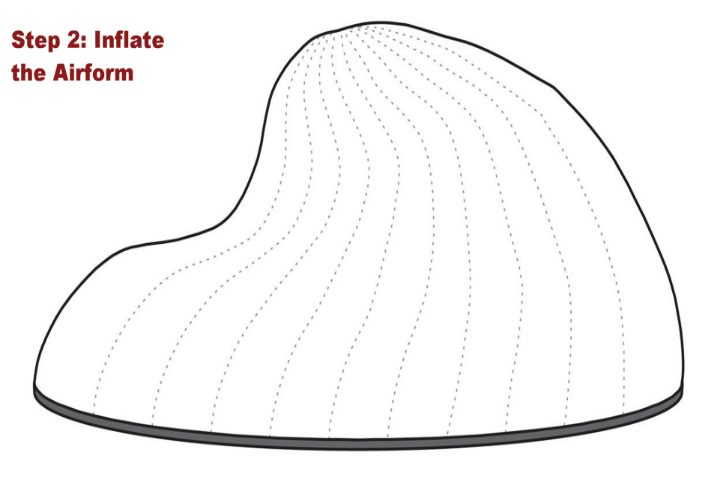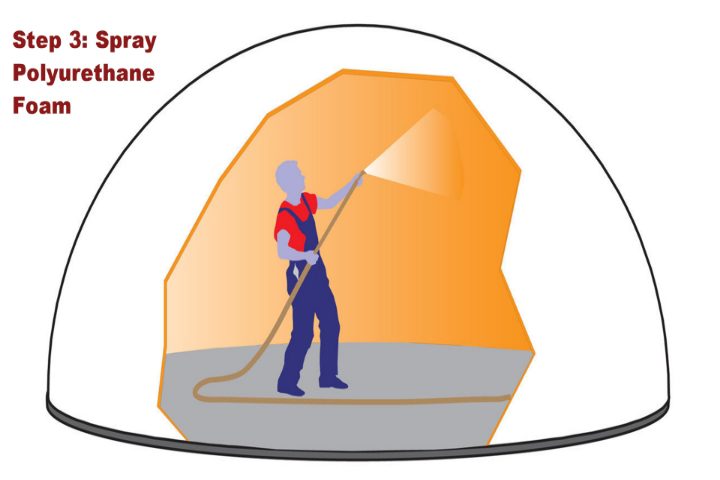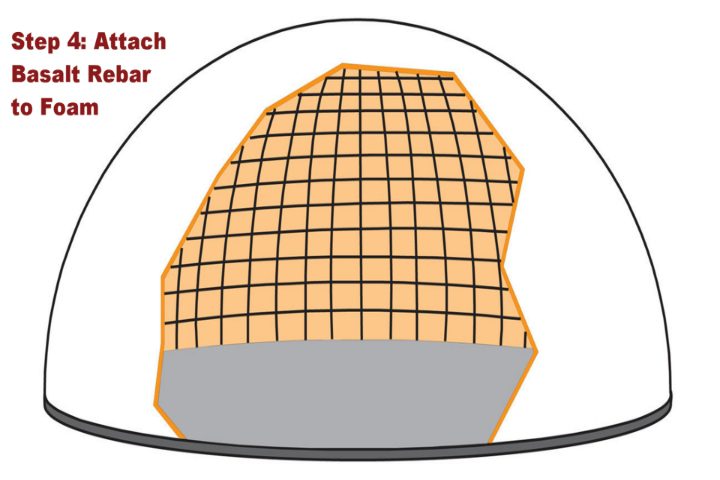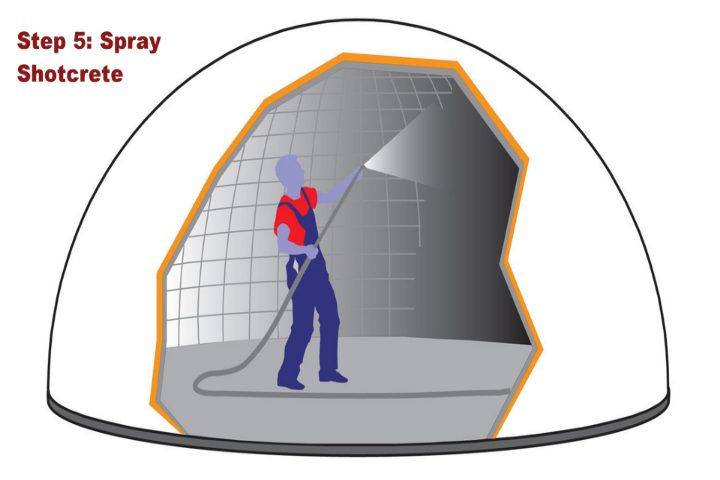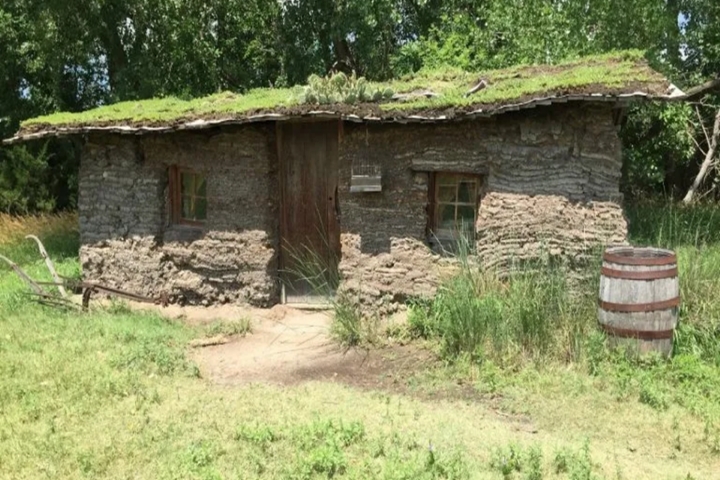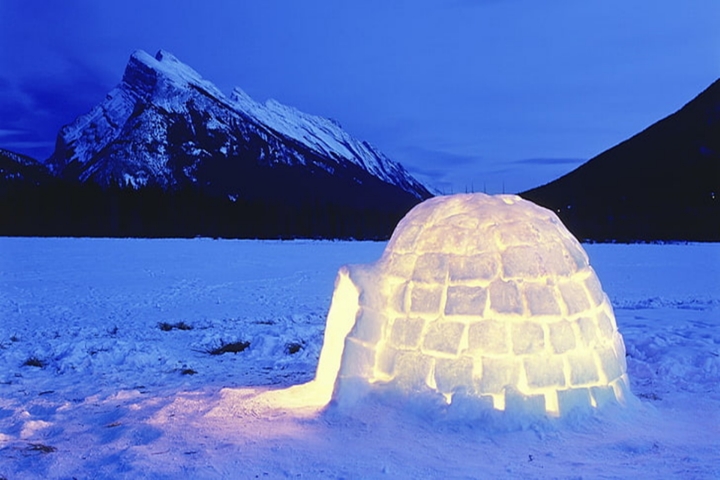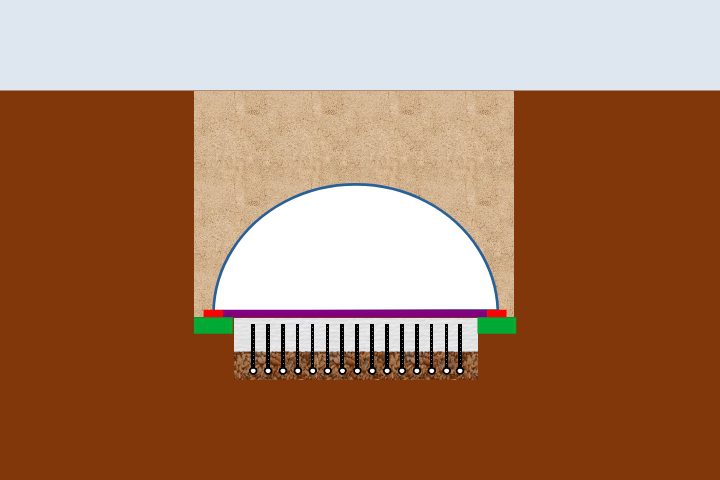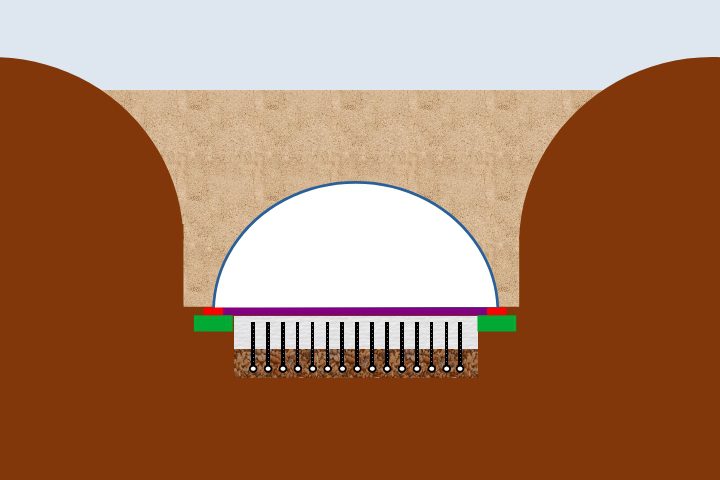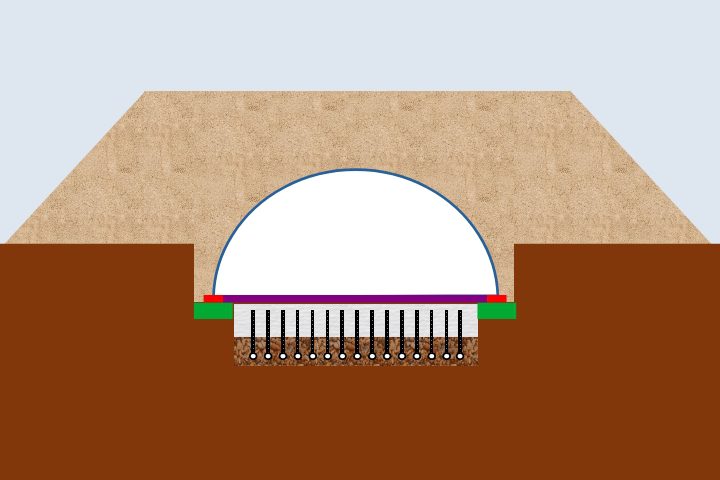Concrete Domes for All-Hazards Survival
The modern dome concept began with the ancient Romans, who built the Pantheon in Rome from 113 to 124 AD. The Pantheon still stands in all its glory today, a testament to the strength of concrete domes.
They can withstand Major earthquakes with a magnitude of 9.0+, and on the Enhanced Fujita Scale, they can withstand the 200 mph hypervelocity winds of an F5 tornado. Compared with other designs, they are easier to build, last longer, and offer the highest level of all-hazards protection possible.
David B. South is the inventor of the modern concrete dome. He built many dual-purpose shelters in tornado-prone areas in America. They usually served as high school indoor gymnasiums, and everyone went to the dome for safety when the alarms sounded. Several of his domes took direct hits from F4 and F5 tornadoes with only minor damage to their trim, which could always be quickly repaired. While researching my book, I flew to Texas to meet him and his aquaponics engineer at his home office in Italy,
David was initially skeptical as I explained that I was writing a survival book and wanted to feature his designs, telling me I was not the first to ask. The last man to ask said he wanted a dome with an armored cupola on top for a machine gun; David threw him out of his office.
When you meet someone for the first time, there is that moment when you know something could come of it, or if it’s just time to move on.
I paused as we studied each other and then said, “David, I’m writing a book called Win-Win Survival Handbook, and my motto is, prepare for cooperation, not confrontation.
He said he liked that, and feeling relieved, I continued. Your domes could save many lives and are ideal for below-ground aquaponic farming. That’s why I’m here. A big smile crossed David’s lips, breaking the tension, and he happily said, “I’ll help you.” Then he introduced me to his aquaponics engineer, who explained how to grow anything in a dome, as he had for several of David’s large commercial clients. After that, he helped me with the dome designs for survival and space colonization featured in my book.
He was a man of God who loved people, as he helped me to help others, and he passed two years later. Thanks to his extraordinary generosity, my book explains everything you need to know to plan and build a variety of domes for all-hazards survival. Still, you may wonder why concrete domes are the best structures for survival. If so, here are the reasons why.
Modern Concrete Domes
Concrete domes can look plain and functional, or you can make them look stunningly beautiful. Either way, a DBS (David B South) concrete dome is constructed using an airform. In the past, a mound of dirt served the purpose.
David’s design is unique because he uses an inflatable airform, or what some call a bladder, to serve as the form. In the past, a mound of dirt served the purpose, which was time-consuming. However, David’s airforms are manufactured before construction and shipped to the job site and great speed the build.
All-Hazards Comfort and Safety
Unlike typical bunkers that feel cold and crowded, the genius of his design is that the only load-bearing surface is the dome itself, which opens up a whole world of incredible design opportunities.
Instead of convincing families to live in a cold and cramped honeycomb-style bunker, your below-ground concrete dome will be bright, open, and inviting. Their wide-open interiors create the right environment for a family-friendly, permanent off-grid lifestyle.
Ease of Construction
Using the concrete dome techniques explained in my book, you can build a complete dome in 90 days for the price of a custom home. I call them DBS Domes to honor David.
Five basic steps are required to build a complete shell that is ready for essential needs such as storage, water reservoirs, etc. The interior build-out for below-ground homes, offices, and farming is the same as for any other design. The first step is to pour the foundation, and once it has fully cured, you’re ready for the second step, placing and inflating the airform.
After the airform is fully inflated, you enter the dome through an airtight chamber and begin by spraying a layer of polyurethane foam on the inside surface of the dome airform. Then you attach reinforcement, which has two kinds: steel and basalt.
According to David, a dome built with steel reinforcement will last 100 years, whereas a dome built with basalt reinforcement will last 1,000 years or more and will be stronger. I recommend basalt in my book.
Once the reinforcement is ready, spray shotcrete onto the airform to create the dome shell. Shotcrete is a specialized construction technique where concrete or mortar is pneumatically projected at high velocity onto a surface through a hose and nozzle system. After the dome has fully cured, you are ready to complete the interior.
Thermal Battery Effect
A significant aspect of any construction method is the energy and equipment needed to maintain a comfortable environment. Here is where a concrete dome’s thermal battery attributes make it remarkably efficient.
A concrete dome combines the thermal attributes of sod houses and igloos. Pioneers who settled in the plains would first build a sod house as a temporary residence. Winters were cold and summers hot, and their sod houses operated as thermal batteries through their massive earth construction, typically featuring walls 2-2.5 feet thick.
During summer, indoor temperatures were significantly cooler than outdoor temperatures, likely maintaining 68-75°F during the hottest parts of the day. When heated with wood or coal stoves in winter, indoor temperatures stayed between 60-70°F (15.5-21°C). Ergo, even though they are not a pretty sight, sod houses were so comfortable settlers often lived in them for five years or more.
The rule for concrete domes is to use one-fourth the cooling or heating required by a frame house of the same size. When used with heat pumps, the only energy needed is to run the mechanical HVAC equipment. Occupancy is also a factor with concrete domes, and in this regard, their thermal battery properties are comparable to Igloos, which achieve remarkable thermal efficiency through snow and ice construction. The compressed snow blocks contain up to 95% trapped air within tiny ice crystals, creating exceptional insulation properties.
Igloos excel as short-term thermal batteries for extreme cold conditions. Their low thermal mass means they respond quickly to heat input from occupants, rapidly warming the interior space. Even at the coldest interior temperatures, an igloo can be 40 to 60 degrees warmer than the outside environment. When two people are inside the igloo, the temperature can reach around 15°C (59°F), and the more people present, the more body heat is generated to warm the space.
With a concrete dome, body heat and moisture will increase the interior temperature and humidity, which can be easily controlled. Another thermal battery attribute is the dome overcover, which further improves efficiency.
All-Hazards Overcover
Overcover plays an essential role in providing all-hazards protection for a concrete dome. A minimum of 5 feet of earth overcover is needed to protect from nuclear EMP. Because the dome’s airform is covered, it will never deteriorate due to UV light from the sun.
The Win Survival Handbook’s overcover recommendations vary from 5 feet for basic protection to 14 feet for meteorite, impact, and bomb protection. The book explains a layered strategy that is considerably more effective than dirt alone. Your basic options are illustrated below if you need to build on flat land.
The Win-Win method best suits building all-hazard domes on vertical land with a 30-degree slope. A wedge is cut in the side of a large hill or mountain and excavated for the dome, which then receives a sloped overcover.
A properly constructed Win-Win concrete dome with basalt reinforcement will last over a thousand years, and each subsequent generation that inhabits it can redesign the interior to its liking whenever it chooses for an enduring legacy of family history and pioneering achievements.

